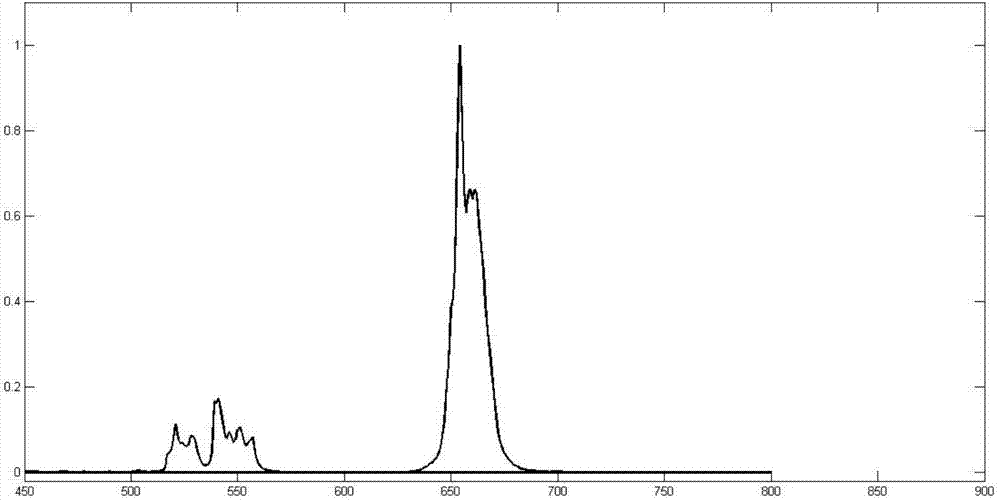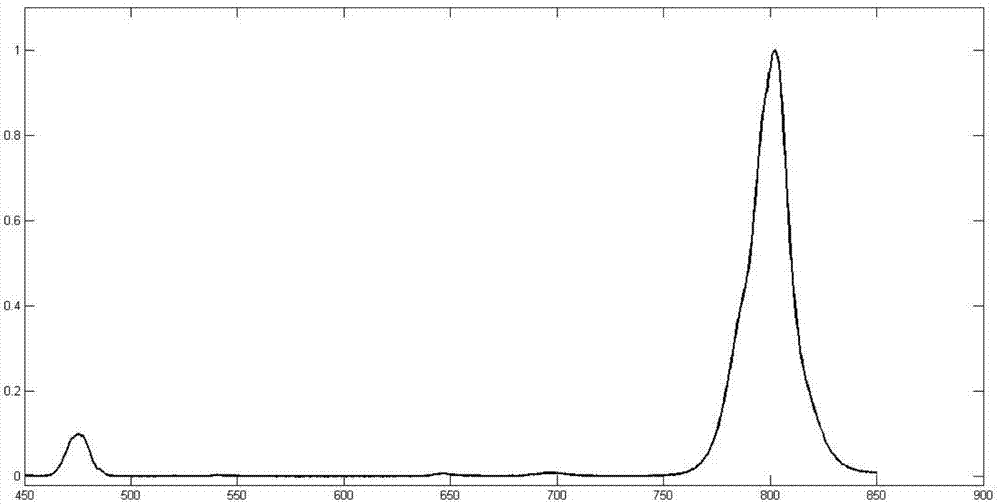Up-conversion-nanocrystal-based stimulated depletion super-resolution optical microscopic method and up-conversion-nanocrystal-based stimulated depletion super-resolution optical microscopic system
A stimulated loss, optical microscopy technology, applied in the field of optical microscopy and optical nanomaterials, can solve the problems of small wavelength interval of excitation light detection fluorescence, high cost investment, eliminate autofluorescence interference, improve imaging depth, Avoid flickering effects
- Summary
- Abstract
- Description
- Claims
- Application Information
AI Technical Summary
Problems solved by technology
Method used
Image
Examples
Embodiment 1
[0039] like figure 1 As shown, the stimulated depletion super-resolution optical microscopy system based on up-conversion nanocrystals includes a depletion light generation module, an excitation light generation module, a collimating coaxial coupling module composed of two dichroic mirrors, and a multiphoton microscope A scanning module and a photoelectric detection module.
[0040] This example uses NaYF 4 :Yb 3+ / Er 3+ As fluorescent markers for upconverting materials, see figure 2 , its photoluminescent fluorescence spectrum has two emission peaks at 532nm and 655nm, so this embodiment adopts the first continuous laser 1 with a center wavelength of 532nm, and the laser emitted by it is phase-modulated by a spatial phase modulation plate to form a hollow beam as For the stimulated depletion light, the second continuous laser 7 with a center wavelength of 975nm is used as the excitation light of the fluorescent marker to detect the super-resolution two-photon fluorescenc...
Embodiment 2
[0046] Present embodiment except following feature other structures are with embodiment 1:
[0047] Depend on image 3 As shown, this embodiment uses NaYF 4 :Yb 3+ / Tm 3+ As an up-conversion material fluorescent marker, its photoluminescence fluorescence spectrum has two emission peaks at 480nm and 800nm, so the first continuous laser with a center wavelength of 800nm is used to form a hollow beam after phase modulation by a spatial phase modulation plate as the stimulated For loss of light, the second continuous laser with a center wavelength of 975nm is used as the excitation light of the fluorescent marker, and the photodetection module detects the 480nm super-resolution two-photon fluorescence signal generated by the above-mentioned two laser beams collimated, coaxially coupled, focused and scanned. Obtain fluorescence imaging.
[0048] In this embodiment, the critical wavelengths of the high-transmission and low-transmission anti-dichroic mirror and the low-transmis...
Embodiment 3
[0050] Present embodiment except following feature other structures are with embodiment 1:
[0051] Depend on Figure 5 As shown, this embodiment uses NaYF 4 :Er 3+ As a fluorescent marker for upconversion materials, Er 3+ As a sensitizing ion and an activating ion at the same time, its photoluminescence fluorescence spectrum energy level structure has two emission peaks at 655nm and 545nm, and the excitation light energy level difference is as follows: Figure 5 As shown, the first continuous laser with a central wavelength of 655nm is used as a hollow beam after phase modulation by a spatial phase modulation plate as the stimulated loss light, and the second continuous laser with a central wavelength of 1490nm is used as the excitation light for fluorescent markers. The detection module detects the 545nm super-resolution three-photon fluorescence signal generated by the above-mentioned two laser beams collimated, coaxially coupled, focused and scanned to obtain fluorescen...
PUM
 Login to View More
Login to View More Abstract
Description
Claims
Application Information
 Login to View More
Login to View More - R&D
- Intellectual Property
- Life Sciences
- Materials
- Tech Scout
- Unparalleled Data Quality
- Higher Quality Content
- 60% Fewer Hallucinations
Browse by: Latest US Patents, China's latest patents, Technical Efficacy Thesaurus, Application Domain, Technology Topic, Popular Technical Reports.
© 2025 PatSnap. All rights reserved.Legal|Privacy policy|Modern Slavery Act Transparency Statement|Sitemap|About US| Contact US: help@patsnap.com



